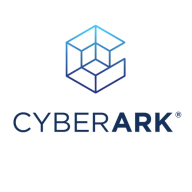

CyberArk Privileged Access Manager and Symantec Privileged Access Manager are leading solutions in the privileged access management space. CyberArk seems to have the upper hand due to superior support and pricing satisfaction, while Symantec has an edge with its feature-rich offering.
Features: CyberArk is noted for its robust password management, auditing capabilities, and solid integration of security features. Symantec stands out with its advanced session monitoring, integration flexibility, and comprehensive feature set.
Room for Improvement: CyberArk could improve scalability, reporting functionalities, and proactive optimization. Symantec could enhance product updates, optimization, and streamline its update process.
Ease of Deployment and Customer Service: CyberArk is preferred for its straightforward deployment and well-regarded customer service. Symantec users find deployment more complex but value their thorough customer service.
Pricing and ROI: CyberArk impresses with competitive setup costs and solid ROI. Symantec has higher initial costs but offers significant ROI due to its extensive features.
| Product | Market Share (%) |
|---|---|
| CyberArk Privileged Access Manager | 11.6% |
| Symantec Privileged Access Manager | 1.7% |
| Other | 86.7% |

| Company Size | Count |
|---|---|
| Small Business | 59 |
| Midsize Enterprise | 40 |
| Large Enterprise | 173 |
| Company Size | Count |
|---|---|
| Small Business | 14 |
| Midsize Enterprise | 6 |
| Large Enterprise | 30 |
CyberArk Privileged Access Manager is a next-generation solution that allows users to secure both their applications and their confidential corporate information. It is extremely flexible and can be implemented across a variety of environments. This program runs with equal efficiency in a fully cloud-based, hybrid, or on-premises environment. Users can now protect their critical infrastructure and access it in any way that best meets their needs.
CyberArk Privileged Access Manager possesses a simplified and unified user interface. Users are able to manage the solution from one place. The UI allows users to view and manage all of the information and controls that administrators need to be able to easily access. Very often, management UIs do not have all of the controls and information streamlined in a single location. This platform provides a level of visibility that ensures users will be able to view all of their system’s most critical information at any time that they wish.
Benefits of CyberArk Privileged Access Manager
Some of CyberArk Privileged Access Manager’s benefits include:
Reviews from Real Users
CyberArk Privileged Access Manager’s software stands out among its competitors for one very fundamental reason. CyberArk Privileged Access Manager is an all-in-one solution. Users are given the ability to accomplish with a single platform what might usually only be accomplished with multiple solutions.
PeerSpot users note the truly all-in-one nature of this solution. Mateusz K., IT Manager at a financial services firm, wrote, "It improves security in our company. We have more than 10,000 accounts that we manage in CyberArk. We use these accounts for SQLs, Windows Server, and Unix. Therefore, keeping these passwords up-to-date in another solution or software would be impossible. Now, we have some sort of a platform to manage passwords, distribute the inflow, and manage IT teams as well as making regular changes to it according to the internal security policies in our bank."
Hichem T.-B., CDO & Co-Founder at ELYTIK, noted that “This is a complete solution that can detect cyber attacks well. I have found the proxy features most valuable for fast password web access.”
CA Privileged Access Manager is a simple-to-deploy, automated, proven solution for privileged access management in physical, virtual and cloud environments. It enhances security by protecting sensitive administrative credentials such as root and administrator passwords, controlling privileged user access, proactively enforcing policies and monitoring and recording privileged user activity across all IT resources. It includes CA PAM Server Control (previously CA Privileged Identity Manager) for fine-grained protection of critical servers
We monitor all Privileged Access Management (PAM) reviews to prevent fraudulent reviews and keep review quality high. We do not post reviews by company employees or direct competitors. We validate each review for authenticity via cross-reference with LinkedIn, and personal follow-up with the reviewer when necessary.